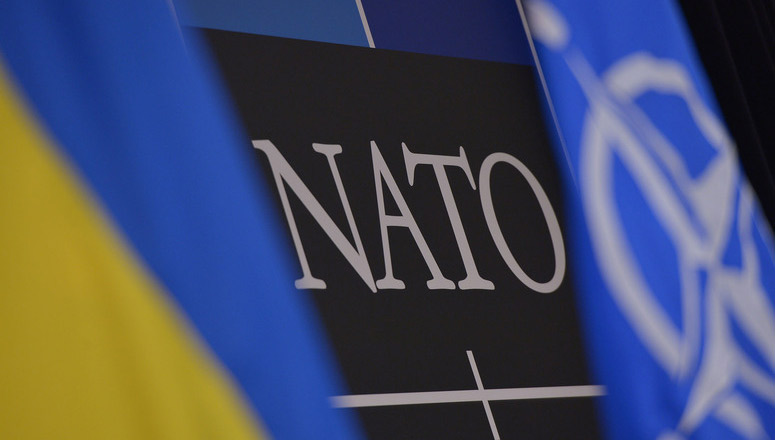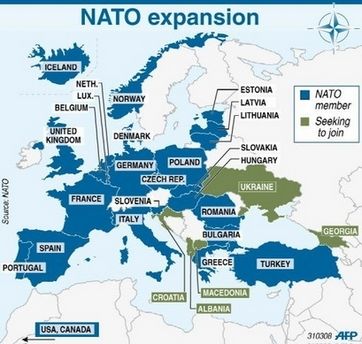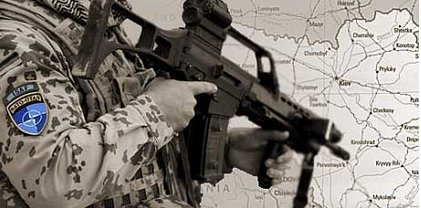In this piece we focus on how the United States exercises its power over Europe — and why.
Firstly, it is often asserted that Nato is a purely defensive alliance.
Certainly, the original Washington Treaty which established Nato in 1949 was framed as a mutual defence pact with the emphasis on defence, security and protection.
Yet the reality of recent practice is different.
Over the past two decades an enlarged Nato has fought wars against a range of adversaries on three continents. None of these was in response to any threat to its members in Europe or North America.
There has never been any doubt about which nation dominates the alliance.
From international financial institutions to military alliances, those who make the biggest financial contribution inevitably come to control decision-making.
Nowhere is that more true than in Nato where the US is by far the biggest contributor.
It finances almost 75 per cent of Nato spending — up from 63 per cent in 2001. Only three countries (the US, Britain and Greece) currently meet Nato military spending guidelines of 2 per cent of GDP.
Moreover, the United States holds the key military commands.
The civilian post of Nato secretary-general is traditionally held by a European.
But, aside from September 2012 when a French officer was appointed to the second highest post of Supreme Allied Commander Transformation, the two supreme commanders have always been US military officers.
Their chain of command goes back to the Pentagon and the White House.
Perhaps more importantly, the US holds a virtual monopoly of the instruments of modern high-intensity warfare.
It is the only country with globally based military forces and with the capacity to wage war on land, sea and air against any adversary on the planet.
And despite US complaints that Nato countries need to spend more on defence and share the US "burden," Nato members are encouraged to develop niche or specialist capabilities that complement US facilities rather than duplicating them.
Thus, even the best equipped of European allies, like France or Britain, are highly dependent on the United States for air defence suppression, intelligence, surveillance, target acquisition, reconnaissance and aerial refuelling — a dependency that was exposed during the largely European-led interventions in Libya and Mali.
Nato is the military wing of a much wider project. It exists ultimately to open the world to business for US companies.
This starts in Europe by ensuring that Nato members, old and new, support US values and policies such as free trade, privatisation, deregulation and open economies.
Indeed, much of what Nato does is about eliminating resistance to such policies at home and abroad.
That's why Nato works closely in tandem with the EU.
It is remarkable how the growth of Nato and the EU go hand in hand and step by step.
The European Union implements the policies of what used to be called the "Washington Consensus" on the European continent. Thatcherite neoliberal economics is written into its constitution and is enforced on every member state in virtually every sector of the economy.
Comment: The Washington Consensus "is the set of 10 policies that the US government and the international financial institutions based in the US capital believed were necessary elements of 'first stage policy reform' that all countries should adopt to increase economic growth."
The EU is driving a savage austerity programme across Europe, not just in the highly indebted south, but in almost every other EU member state including Britain.
Just as the United States dominates Nato, it exerts growing influence in the European Union, as that organisation expands east and south across Europe.
The differences that emerged in Nato around the time of the Iraq war — Franco-German versus Anglo-American — have been mirrored in the EU.
And US influence in the EU has been increased by the rapid expansion of the organisation into eastern Europe.
But Britain, often described as the Trojan Horse for the United States, is the key country which facilitates US influence in the EU.
This is the foundation of the "special relationship" by which the elites of the three main Westminster parties, and the SNP in Scotland, hitch their wagons to an Atlanticist strategy in Nato and the EU.
But the US also has a huge stake in the EU's financial system.
The City of London is now dominated by US banks which use the City to access markets across the EU.
By 2011 the stock of US foreign direct investment in the EU amounted to a massive $2.1 trillion.
And the Transatlantic Trade and Investment Partnership (TTIP) currently being negotiated between the EU and the US could remove most of the remaining legislation on the European side which protects environmental, health and safety and trade union rights won over decades of struggle.
Thus the TTIP would comprise a huge transatlantic free-trade market of 850 million people which could cement the power of the US and its transnational companies over much of the Western world.
In short, Nato is a military alliance which was created and expanded by the United States to suit its wider geostrategic interests.
But, as we shall see in the next article, the United States and Nato are far from all-powerful and face a growing challenge to their goal of global domination.






Comment: NATO has Europe ensnared in an elaborate web of debt, blackmail, corruption, and austerity. The rest of the world, struggling to grow in this corrupting atmosphere, is attempting to build an alternative. Check out: